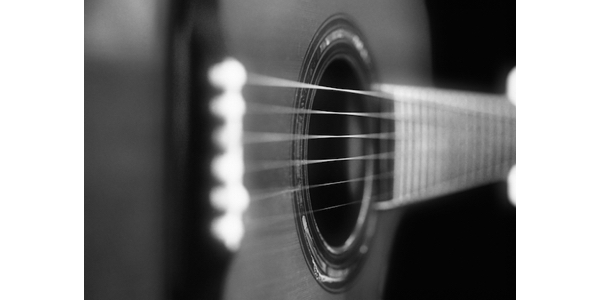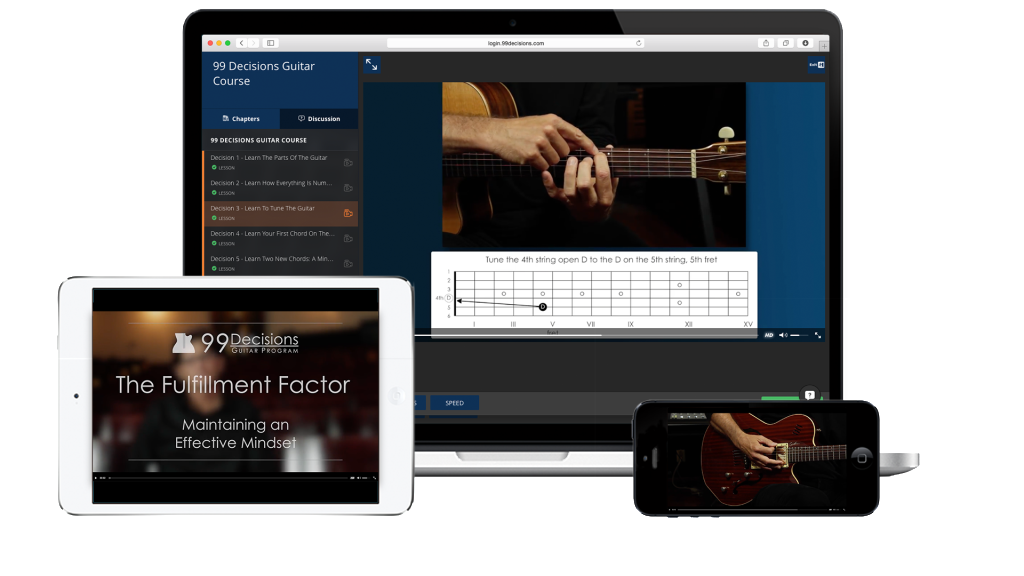The holiday season is a time of joy & happiness and connecting with friends and family and getting in tons of extra practice time on your guitar and egg nog and shopping for… wait, what?!
Who gets extra practice time during the holidays?
“No one.”, you say?
Well, I’ve got the prefect solution to alleviate your holiday practice time anxiety…
Here is a collection of Quick Tips from the 99 Decisions Newsletter. They’re just what you need for having a quick musical growth experience that will inform & expand your guitar playing in some profound way.
Just when you are at the point where you are ready to scream at the holiday craziness, stop what you are doing, pick up your guitar & spend a few minutes with one or two of these Quick Tips.
Resist the urge to binge practice on ALL the tips. That would be counter productive. Pick one, take a nice cleansing breath, relax your mind & body and proceed.
When you are done, bring some of that calmness into your next activity.
And remember to say, “Happy Holidays!”, as you make that hand gesture to the driver who just cut you off in the mall parking lot.
Do your chord transitions sound sloppy?
Remember to place your fingertips simultaneously on all the strings as you move to each chord. Tricky at first, perhaps, but take a few seconds, close your eyes & visualize your fingers landing together. Then open your eyes & make the move.
Does your guitar pick twist & slide around in your hand? Try this…
Take your pick and, using a knife, carefully add grooves to each side. The idea is to turn the smooth surface into a not smooth surface. You could also use sandpaper. This will give your fingers a better grip on the pick!
How much pressure do you need to effectively hold a guitar string down against the fret? Do you want to find out? Well, put on a lab coat & let’s do an experiment:
Take your first finger & put it on the 6th string at the 5th fret. Hold it firmly, like you normally would. Now, very gradually release the pressure until the string starts to buzz, then press back down just enough to get the note to ring clearly. This will show you exactly how much pressure is necessary. Try this with the other fingers on the other strings at various frets. Make it a ninja-like experience to discover how to play with a light touch. Maximum results with minimal effort!
Come up with a list of five songs you have always wanted to be able to play. Make a playlist of these songs on your preferred device. Get into a relaxed and focused mindset & listen to these songs with headphones. While you are listening, create a mental movie of yourself performing the guitar parts. Visualize in as much detail as possible. Remember to maintain an inner feeling of positivity & confidence.
Make it a goal to do this every day for two weeks.
Get a grip on your dynamic technique! And I mean literally…’cause how tightly you grip your pick determines the volume of your strumming, or string picking. Experiment by strumming the strings while holding the pick super tight… use a death grip! Now, strum holding the pick so loosely you’re about to drop it.
Hear the difference?
Tight = Loud
Lose = Quiet
This works the same when you are only picking one string.
Start a practice journal & write down every single thing you work on with every single practice session. In a short while, you’ll have tangible evidence of your efforts and this will have a profound effect on your motivation… which will result in you wanting to practice more often. Simple, yet effective… that’s what we all like, right?!
A mnemonic device is a learning technique you can use to remember things. When it comes to music theory, there are some important names & labels for various concepts and it behooves you to get them down solidly.
Here’s one for the modes:
In Denver People Like Mayonnaise And Lettuce
This gives you the first letter of each mode name:
Ionian Dorian Phrygian Lydian Mixolydian Aeolian Locrian
This tool for retention also works well for remembering the order of sharps & flats in key signatures, as well as any other groups of words you need to retain in your brain. The wackier the sentence, the better it will help you remember.
Be aware that some of the things you practice are time-based and some of the things are repetition-based.
If you set a timer and play an exercise, than how fast you play the exercise will determine how many repetitions you achieve.
If you decide to play an exercise for a certain amount of repetitions, say 10 times, for example, than how fast you play the exercise will determine how long it takes to complete the 10 repetitions.
Knowing this enables you to more accurately structure your practice sessions for optimal time effectiveness. Awareness is key!
Grab any chord & look at your hand. Can you name any the notes without moving your hand?
Being able to analyze chords while you are playing them is an invaluable skill that is easier to develop than you think. Practice by holding chords & naming each note on each string by its letter name & its chord formula number. Take it slow. Resist the urge to move the finger you are calling out.
Building your musical cognition in this manner will strengthen the connection between your mind & your fingers, as well as deepen your knowledge of the chords you use on a daily basis.
Do you always play your scales the same way?
You know, from the lowest note to the highest note, and then back down? There is a very strong tendency for guitarists to always (and I mean always) play their scales ascending & descending.
So try this for a week or two: do the opposite.
When you are running through your scale patterns, always start on the highest (top) note of your scale patterns & run them descending & ascending. It might not seem like such a big deal but you may be surprised how different of an experience it is for you.
Don’t forget that scales are used to play music & music can start from any note & go in any direction!
When using directional & locational terms to describe note direction & location on the guitar, you have to always be referring to pitch.
So… top & bottom, up & down, high & low, ascending & descending, are describing notes in reference to their pitch.
For instance, many people think of the 1st string as being the “bottom” string since it is closest to the floor. But its pitch is higher than the other five strings so it is actually the “top” string. Same thing goes with calling the 1st string the “low” string. It is actually the “high” string. And also, “up” or “down” the neck, or “ascending” and “descending” a scale pattern.
This can cause much confusion for your brain if you are inconsistent with how you are thinking about such things. It’s all about pitch, I tell you!
For the rest of this month, don’t play any scale pattern starting on the bottom note. Start on any note you want, but not the lowest note of the pattern. That’s right, make it a decree. Why?
Because it is one of the most prevailing propensities of any practicing guitarist I’ve ever seen.
We are creatures of habit & if you always start a scale pattern on the same note, then when you go to use a scale to improvise a guitar solo, you will most likely always start on that lowest note and go from there. Too much predictability is bad for art.
So make yourself aware & choose differently!
Take your favorite strum pattern. You know, the one you always play when you pick up your guitar & start to strum.
Now, play it as fast as you can, but play it really softly.
Next, play it really slowly but play it really loudly.
It is very common to equate fast with loud, and slow with quiet. This is a good way to show yourself how music can run the gamut in all directions when it comes to dynamics.
Have you ever found yourself completely zoning out while practicing?
It’s amazing how the fingers can go on auto-pilot while your mind starts thinking about what you’re going to do tomorrow, or what to make for dinner, or…???
What’s funny is that while this can sometimes be a good thing while in the zone of performing, it’s NOT such a good thing when you are in the zone of deliberate practicing.
So try this simple technique used in the practice of meditation:
Every time you notice your mind has wandered, stop playing.
Just stop what you are doing for a second. And then re-start.
But you have to really stop playing EVERY time your mind wanders.
I’m going to warn you… this will likely happen many many times during the course of your practicing. But abruptly stopping will bring your awareness to the present moment and eventually, after many of these moments, you will be able to focus for longer periods of time.
Yay for consciousness!



Leave A Response